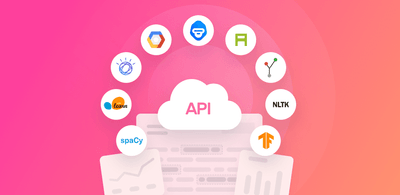Text Analysis Online – How To Quickly Get Started
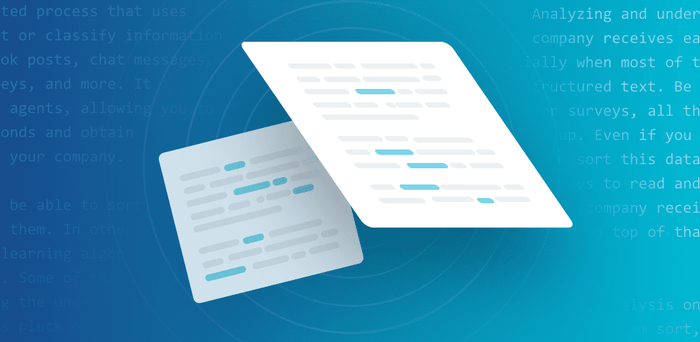
Analyzing and understanding all the customer feedback your company receives is challenging, especially when most of that data comes in the form of unstructured text.
Be it tweets, online reviews, emails, or surveys, all your information starts to pile up. Even if you have an experienced team to tag and sort this data, it would take them days to read and organize thousands of messages. On top of that, tagging text data is unrewarding and monotonous.
Luckily, online text analysis tools can help your team sort, categorize, and gain deep insights from your text data in a quick and efficient way.
In this post, we’ll explain how text analysis with machine learning is useful for your company and show you how easy it is to get started with online text analysis tools.
Finally, we’ll introduce you to some of the best online text analysis tools, and even show you how to build a custom model to analyze your text.
- What Is Text Analysis?
- Why Is Text Analysis Important?
- Online Tools for Text Analysis
- How to do Text Analysis with an Online Tool
What is Text Analysis?
Text analysis is an automated process that uses machine learning and natural language processing to extract or classify text. It performs analysis on all your feedback in real time, allowing you to structure your data in seconds and obtain interesting insights about your business.
First, you need to teach text analysis tools how to carry out certain tasks by manually training them. It may sound complicated, but no-code tools like MonkeyLearn, make it really easy to get started with text analysis online.
Why Is Text Analysis Important?
Online text analysis tools can help you improve your processes and overall business.
Instead of asking customer support teams to manually analyze customer feedback, you can analyze it instantly with text analysis tools in a matter of seconds.
Let’s take a look at some of the benefits in more detail:
- Text analysis is scalable: It’s not the same manually analyzing 10 reviews as it is 100. It will take humans a lot more time and effort, and you may lack the resources if there’s a sudden uptick in customer data. Online text analysis tools are scalable and can analyze vast amounts of information in just seconds. Imagine that you suddenly start getting a lot of complaints, and you don’t have the manpower to handle them. You can use online text analysis tools such as MonkeyLearn to help you sort your complaints by urgency and route them to the correct teams to deal with them.
- Perform real-time analysis: Text analysis can sort issues and detect urgent requests in real-time, 24/7. That means your teams won’t have to spend hours sorting tickets and can take immediate action on urgent issues – potentially avoiding a crisis.
- Trust your insights: It’s in our nature to make mistakes. Even more so when tasks are repetitive. Machines, on the other hand, never get tired or bored. Analyzing texts with AI leads to more accuracy. Text analysis tools are not influenced by personal experiences or beliefs; they use just one set of rules to analyze data, rendering the results reliable and accurate.
Online Tools for Text Analysis
MonkeyLearn has a number of pre-trained text analysis tools and techniques ready for you to try out.
Text Classification
Text classification is a text analysis technique that organizes texts into categories so that it’s easier to make sense of them.
Some of the most common text classifiers include sentiment analysis, intent detection, topic analysis, and language detection, among others.
Sentiment Analysis
A sentiment analyzer detects emotions in text, and classifies them as Positive, Negative, or Neutral. For example, a comment that reads “It’s too expensive”, would be tagged as Negative.
Sentiment analysis tools allow you to easily assess your brand’s reputation, whether customers love or hate your products or services, and identify urgent issues.
Topic Analysis
Topic analysis tools sort texts by topic. For example, you can classify product reviews using tags such as Pricing, Customer Support, Design, and more, and automatically route them to team members best equipped to deal with each topic.
You can even combine this model with a sentiment analysis model to perform aspect-based sentiment analysis, which tells you how customers feel about specific topics.
Try out this NPS survey response classfier.
Language Detection
Text analysis can also detect the language of a text. This is very useful when you have issues from customers in multiple languages and you want to route incoming messages to agents who are able to understand them. Our pre-trained language detector can differentiate between 49 different languages. Give it a try!
Intent Detection
An intent classifier can help you understand the intentions of your customers.
Let’s say you receive an email. An intent detection model will analyze the body and the subject of the email, and depending on the words and expressions customers use, machine learning will tag the message accordingly. A client who writes “Let’s arrange a call tomorrow” is clearly Interested, and your text analysis tool will recognize that intent.
Text Extraction
This is another form of automated language processing. This text analysis technique will extract specific information that is already in the text. For example, you can examine a batch of product reviews and obtain the main keywords customers use.
Keyword Extraction
If you are looking for the most relevant terms or phrases, then a keyword extractor can help you. When using this model, you’ll get a summary of your texts in list form.
Entity Extraction
An entity extractor analyzes your text and extracts information, like names, numbers, email addresses, locations, and more, which already appears in your text.
There are many text analysis tools available online, including open-source libraries such as TensorFlow, NLTK, PyTorch, and Scikit-learn. To use these tools, however, you’ll need to know how to code to successfully build a text analysis model.
Ready-to-use online text analysis tools, like MonkeyLearn, are a lot easier to get started with because:
- There's no setup: With out-of-the-box online tools, you won’t have to spend hours setting up the required ecosystems and libraries. With open-source software, like PyTorch, you’ll need to install Python and all its dependencies (such as Numpy, Setup Tools or PyYAML (this also involves installing the language it was built with – in other words, the language it understands.
- You don't need to code: You don’t need to know how to code to get started with ready-to-use online text analysis tools. You build, train, and analyze models in a user friendly interface, while complex machine learning algorithms plug away in the background
- Easy to integrate: Easy to integrate: Ready-to-use text analysis tools often come with integrations, making it easy to connect to the tools you already use. For example, you can connect to MonkeyLearn using the Google Sheets add-on And start analyzing your texts right away.
- Pre-trained models: Ready-to-use online text analysis tools usually offer pre-trained models, so that you can start analyzing sentiment, topic, and more, in next to no time.
Tutorial: How to Do Text Analysis with an Online Tool
To perform online text analysis on huge amounts of data, you’ll need to sign up to MonkeyLearn for free, then follow the tutorial, below:
- Access your dashboard. For this tutorial, choose the sentiment analysis model. You can play around with the sentiment analysis tools by adding a customer comment in the text field, and hitting ‘classify text’.
To run text analysis on large quantities of data, you can upload an Excel or CSV file.
Once you have accessed the sentiment analysis model, click on ‘Batch’. There, you can upload an Excel or CSV file containing your texts.
Select the rows to examine and voilá! You will be able to download an Excel file with the results.

Integrations are also available, so you can easily connect text analysis models to data in your apps:

If you know how to code, you can use MonkeyLearn’s API to run text analysis models with programming languages such as Python, Ruby, PHP, or Java.
Create a Custom Text Analysis Model
If you are looking for more accuracy when examining your texts or use your own set of tags, then you could build and train a custom model for text analysis. This model will learn from your own data and criteria for extraction or classification. Let’s take a look at how to build a custom model for topic analysis.
1. Create a Text Classifier
Access your dashboard and click on create a model. In this example, we’re going to build a classifier:
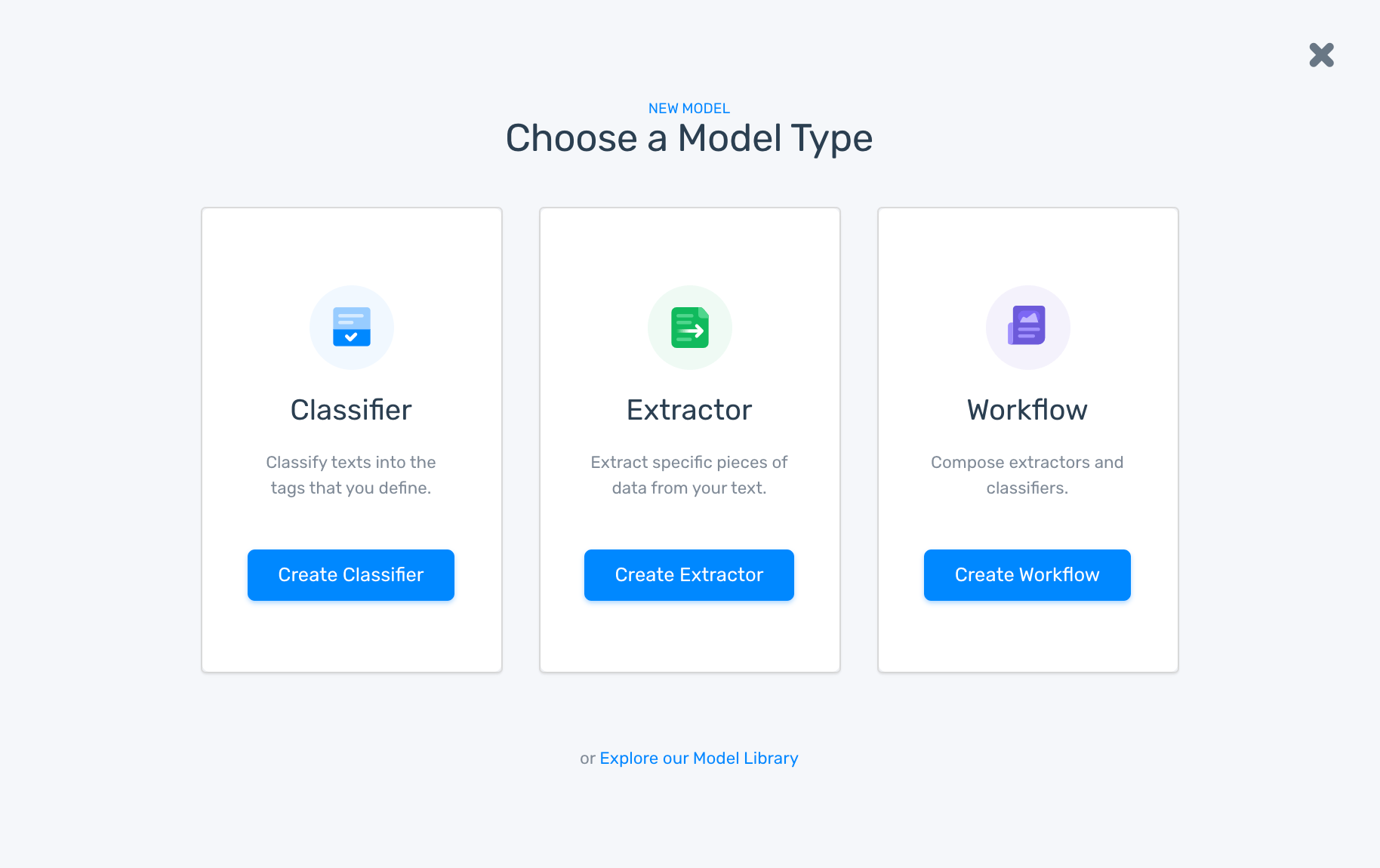
2. Upload Your Texts
In this step, you’ll need to upload some texts as samples to train your model. We’re going to upload a batch of product reviews, for example. You can upload either an Excel or CSV file:

3. Define Your Tags
The next thing you need to do is define your tags. You’ll need at least two. Take into account that the more tags you add, the more samples you’ll need to train your model:
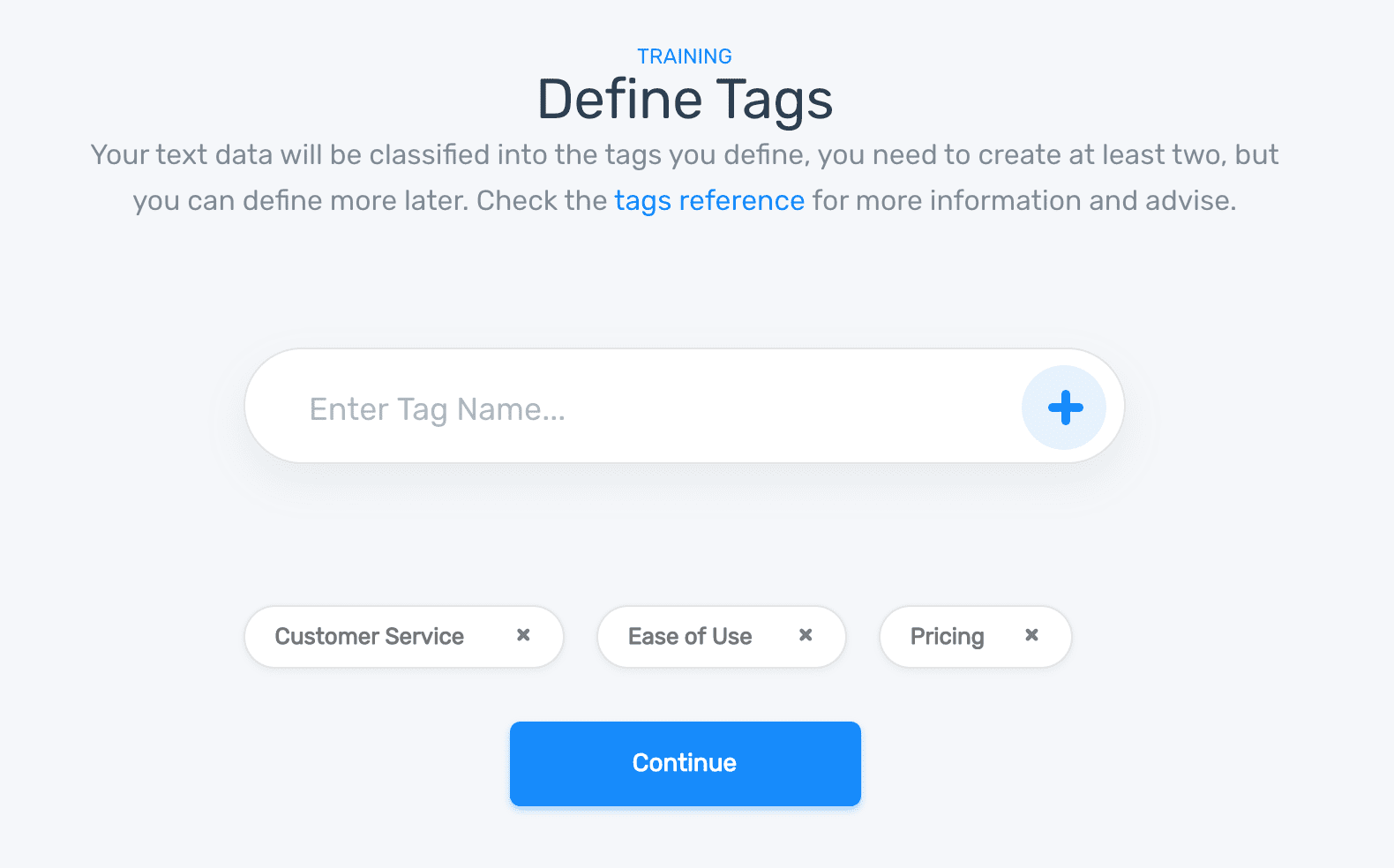
4. Start Tagging Samples
Now it’s time to tag your reviews to train your model. The more you tag, the smarter your model will become, and the more accurate it will be at making predictions:
5. Test the Model!
Once you have finished tagging, you’ll see a screen like this one:
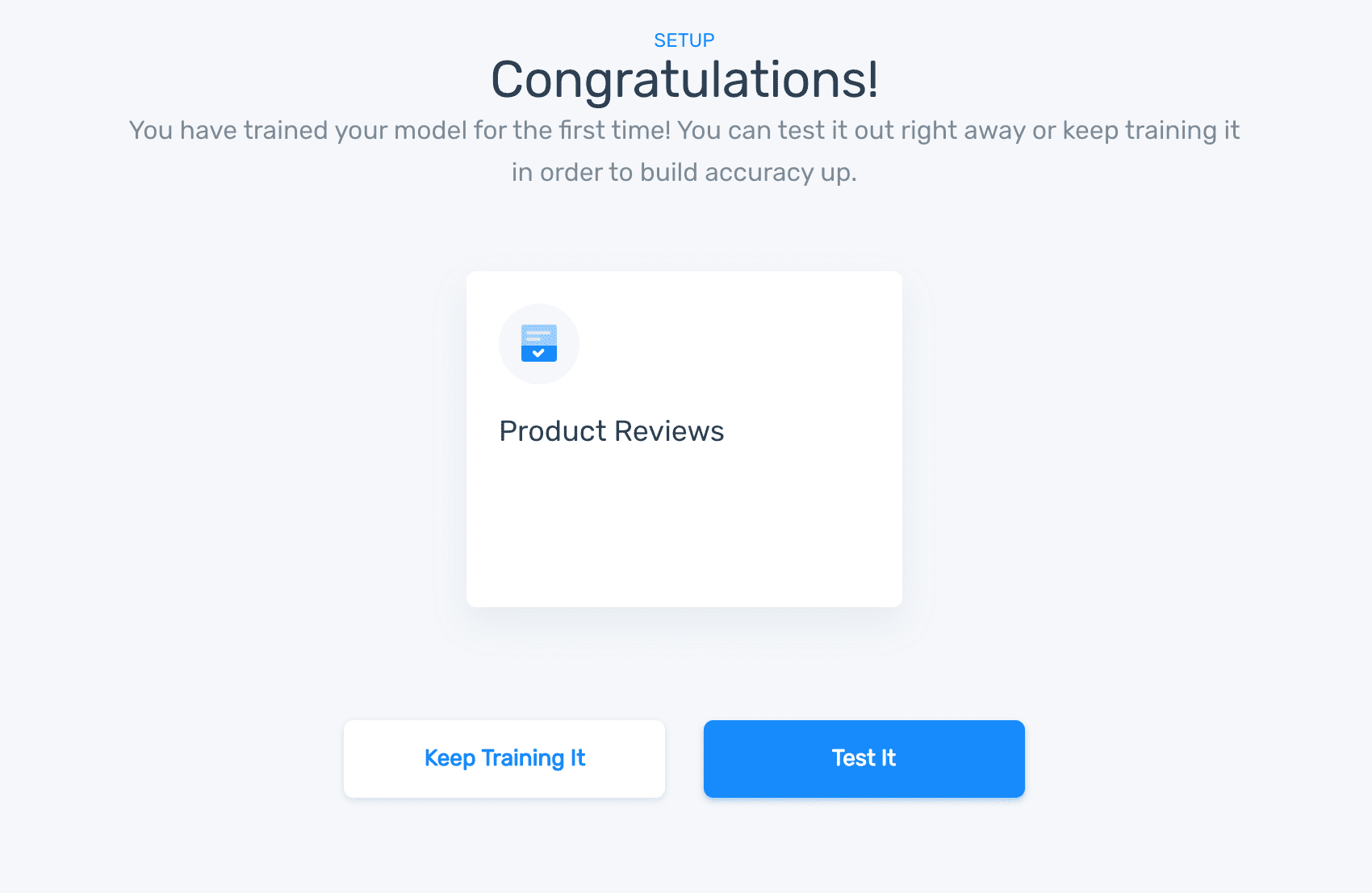
Click the ‘test’ button and see how it detects topics by typing your own review in the text box:
If you want to improve the accuracy and confidence of your model, you just need to keep adding and tagging new data samples. You can also correct incorrectly tagged examples within your model. If you’d like to know a bit more about how online text analysis tools work, check out this guide on data analysis.
Final Words
Thanks to text analysis, your support team no longer has to spend endless hours reading and tagging customer feedback to determine if it’s urgent, what it’s about, and so on.
Text analysis is scalable, fast, and consistent, and will power up your human workforce.
The best part is that there are plenty of text analysis tools available online, and it’s free to get started. Plus, with tools like MonkeyLearn, you won’t need to enter a single line of code.
We’ve mentioned several ways in which online text analysis tools can help your business make the most of your data. Now, it’s over to you. Give text analysis a try and ask for a demo today! Our team will be more than happy to show you how to use MonkeyLearn’s text analysis tools.

Federico Pascual
August 28th, 2019






